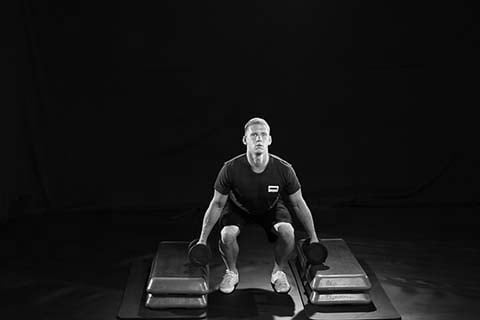
In today's video, Nick will focus on the strength training movement, the Dumbbell Deadlift . The DB Deadlift is the second step in the 3-step deadlift progression, and a great way to add weight resistance once the MB Deadlift movement is mastered. Again, the deadlift is a compound movement that is excellent at building leg, lower-back and core strength, all of which are key components in athlete development.
To summarize, Nick's key talking points in the video:
- In the deadlift movement, the body transitions from a lowered (squat) position to an elevated (standing) position.
- Starting position: the athlete's feet are wider than shoulder width, toes are pointed out, weight is evenly distributed across feet, knees are over feet, chest is up and back is flat.
- Hold DBs, DBs are resting on box or plates, at mid shin height. Shoulders are turned down away from ears.
- Throughout the movement of the deadlift, the athlete must elevate and lower their body in a controlled manner.
- Touch, do not bounce, DBs to box or plate at return to starting position.
- The athlete must not lock knees out at the top of the movement.
- As a teaching tool, add a resistance band around the knees to keep the knees aligned.






-1.png)